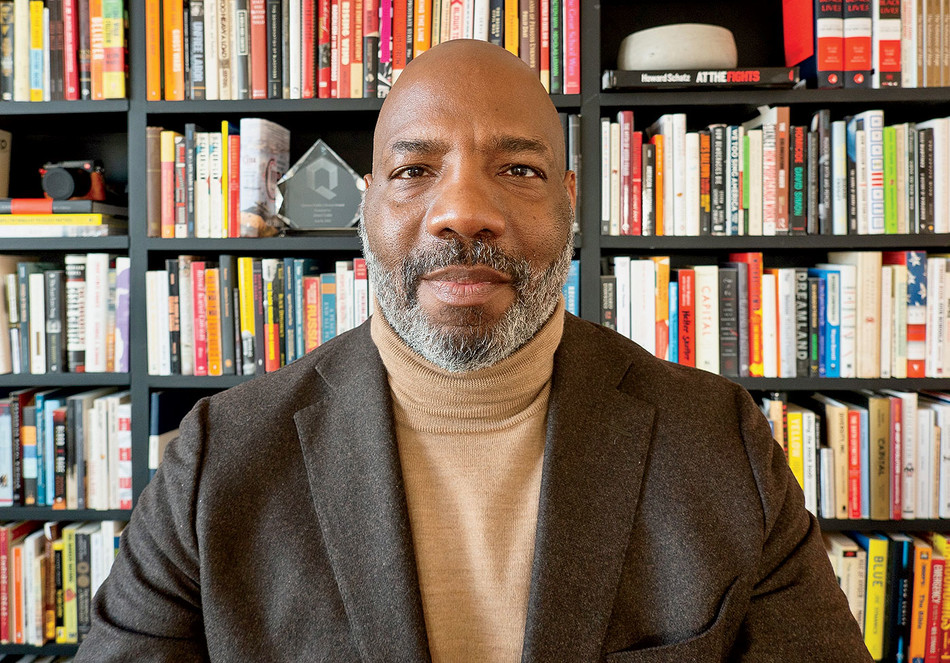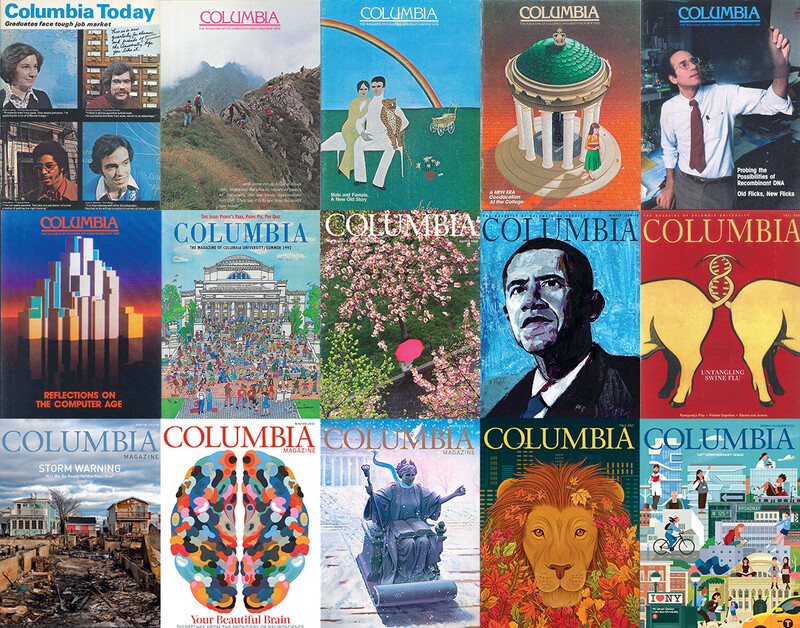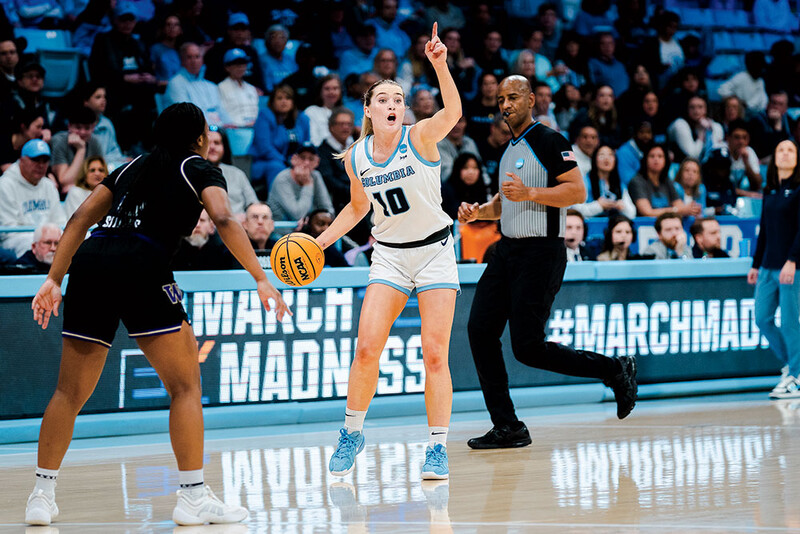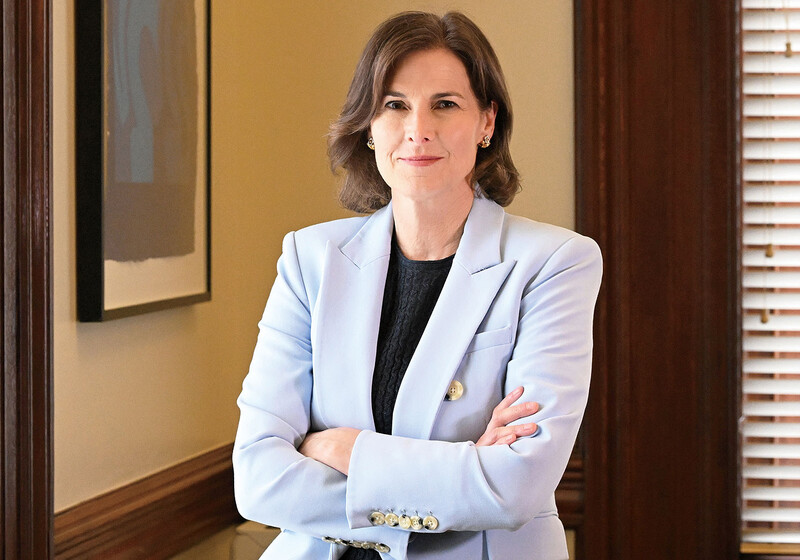Jelani Cobb, the dean of Columbia Journalism School, Peabody Award–winning filmmaker, and longtime staff writer at the New Yorker, discusses the complexities of journalism in 2024.
There’s nothing like a presidential-election year to fire up the media. Does this mean people will be paying more attention to news? And does journalism still shape voters’ thinking on issues?
I do think people will be paying attention to news; they’re already paying attention. And yes, journalism does shape the way voters think about issues, but it no longer shapes it as it once did. Today’s journalists are competing with information sources from all over the spectrum, many of which are not reliable, not vetted, not professional. So the perspectives people have on what happens in the election will realistically be some combination of information they receive from high-quality, vetted news sources and an array of misinformation and disinformation that has proliferated since the 2016 election.
One hypothesis about this glut of mis- and disinformation is that it arises from the siloing of news consumers around dubious sources that simply echo their own preconceptions.
Siloing and people’s reliance on news that most closely conforms to their worldview is certainly one factor. That has been a problem going back a century or more, to the days of the “newspaper wars,” when even smaller American cities had several daily newspapers, each aimed exclusively at a specific type of reader who disliked and distrusted the readers of all the competing newspapers. That pattern continues, and has intensified, in the digital age. But the other factor is the dearth of information, period. We are dealing with the siloing problem in the context of news deserts. Increasingly, in communities all over the country, citizens have no access to local news. That exacerbates the problem.
These news deserts presumably reflect the financial struggles of the news business across all media. Dwindling advertising revenue has triggered layoffs, cutbacks, and outright shutdowns at hundreds of media outlets. Is there a positive side to this grim picture?
The challenges to journalism are significant, there’s no doubt about that. And yes, the predominant concern is resources. But even as we’re grappling with these difficulties, we’re also seeing an unprecedented level of innovation. It’s important to keep track of that. We have an emerging and vital nonprofit sector in journalism. News organizations such as Documented [a nonprofit digital-news site focused on immigration founded by Max Siegelbaum ’16JRN and Mazin Sidahmed ’16JRN] are experimenting with novel methods of dissemination, sending out targeted information to their readers by text message. We have not seen this much innovation on the technical side of news in easily a century.
We still need to figure out how to create sustainable news organizations outside the ecosystem of social media, but there are success stories. The Texas Tribune is the nonprofit news website that people point to most commonly, but there’s also VTDigger in Vermont and Sahan Journal in Minnesota [founded by Mukhtar M. Ibrahim ’17JRN], among others. These are news organizations that have sprung up in the aftermath of a serious decline in institutional news in those locations. They have broken news, covered important stories, and figured out how to staff up and find a stable financial model through a combination of philanthropy, memberships, and public events.
One phenomenon that is constantly invoked in discussions of journalism today is the lack of trust consumers have in so-called “mainstream media.” Where does that come from?
The decline of trust is tied to a couple of dynamics, one of which is the decline of local news. While polls reveal decreasing trust in local news, the level of distrust is not nearly as high as it is with national news. That’s because local news is local. The person who reported a story might have a kid in the same class at school as your kid, or the editor is somebody you went to high school with. There’s that network of personal ties. Also, in these small markets, it’s imperative that the news organization keep all its readers or viewers in its fold, so polarization is much less likely to happen.
Thomas Jefferson had this idea of American democracy as fundamentally local. In many ways, Jefferson’s idea has held up over time. The crisis of trust in journalism is really a crisis of local news organizations. As I’ve said elsewhere, we saw a similar crisis of trust in medicine during the pandemic. Part of that is due to the fact that one hundred million people in the United States do not have access to a primary-care physician. In other words, those people lack any kind of local relationship with the medical establishment. It’s easy for people to become skeptical about large, anonymous institutions. That’s the real driver of the lack of trust in media. The great preponderance of this situation is driven by the dearth of those local, individual connections people make with the news they consume. When local news goes away, trust goes with it.
The other factor with trust is related to what everyone saw with the George Santos fiasco in Congress. The big question was, how could this happen? These gigantic lies he told about his résumé, his name, his background — all these fundamental things. How can anyone trust a press that missed all that? Of course, the real problem, as most journalists will tell you, is rarely the big lies. The most pernicious lies are small, where someone shades a number on a spreadsheet or skews some data about how carcinogenic a particular chemical in a product may be. And to notice discrepancies of that sort requires a kind of meticulous, detail-oriented reporting that takes time and, again, resources.
You link local news to Jeffersonian ideas of democracy, and of course the nation’s founders believed a free, unfettered press was essential to democracy. Can you elaborate on this relationship?
I think Americans have largely adopted a seventh-grade social-studies idea of journalism’s connection to democracy: we believe in some general, vague way that an informed public is a good thing. But because we have tended to think of American democracy as unassailable, we have relegated to the background the real, hard ethical questions about how a pro-democracy press operates. And those questions are fundamental. Do we really benefit society by giving the horse-race version of a political story? Do we further polarization by covering politics the way we cover sports? If there are Yankees fans who loathe Red Sox fans and vice versa, there’s no fundamental societal concern there. It becomes a thornier issue when people of opposing political parties view each other with that same sort of unabashed contempt. We haven’t given enough thought to those kinds of concerns — even when it comes to practical matters, such as how do we cover a disputed election? When do we call something a lie? That was a question we fumbled in the last election cycle, among the many others we had to think about.
So how does one practice journalism in the true interests of democracy?
Journalism must be about the facts. It must have objectivity. And we’ve had a lot of debate and consternation about objectivity. Objectivity does not require that we treat people’s arguments or statements as if they have an equality of merit . It requires that there be equality of scrutiny.
“We may have different structures, different technologies, different approaches, different ethics. But skeptical inquiry into facts that have been obscured from the public is what we do. That is the business we’re in.”
Are you referring to the so-called false equivalence that the press is often accused of adhering to — blindly treating two sides in a debate as equally legitimate?
Yes, that’s part of the problem. The other part is that we should be drilling down on policy, not personality, looking not at whether a public figure won the week or messaged effectively but at the issues they’re talking about and the implications of what they’re saying about those issues. Margaret Sullivan, my colleague at the journalism school, has talked a great deal about this. When I became dean, I launched the slogan “Reporting begins here.” This commitment has been a remarkably consistent mainstay of this institution for the 112 years it has existed. We teach reporting, and the fundamental skills of reporting have remained the same. We may have different structures, different technologies, different approaches, different ethics. But skeptical inquiry into facts that have been obscured from the public is what we do. That is the business we’re in.
So why has journalism devolved into the horse race and the false equivalence?
I think that initially, especially with covering politics, taking a sports-like approach seemed a novel way to get people interested in civic concerns that they might not otherwise pay attention to — but with the result that we became a more divided society. And some of this false equivalence is done to preserve access, because if you say something critical about an elected official or point out an inconsistency, that person may not talk to you and your colleagues again.
Over the last two presidential election cycles, many news outlets benefited from what some called the “Trump bump.” Out of love or hate, people were interested in Donald Trump, and reader-ship, viewership, and subscriptions went up. So news outlets bombarded the public with Trump content, positive and negative. How does journalism hang on to its core values in such a situation?
There’s no guarantee that will happen again in this election cycle. But people were more likely to read what the New York Times was saying or to tune in to a particular news station or podcast because there was a great deal of alarm and concern. Fear is often good for circulation. That’s a conflict of interest that’s been baked into most of our media systems from the outset. The profit incentive may not align with the ethical and democratic incentives. We are concerned these days about the ownership of news organizations, and certainly about the kind of hedge-fund takeovers that have resulted, in many instances, in the stripping down of newspapers for parts. Yet the wealthy have owned American news media for a long time. The Columbia Journalism School is housed in Pulitzer Hall, a building created and funded by an extremely wealthy and powerful newspaper magnate. This concern is not new.
So if conflicts of interest are built into almost every journalism model we have, what is the solution?
We need lots of different models. We need nonprofit papers. We need public media. We need large media. We need small, local, independent media. We need all kinds of different media structures. Here’s a parallel I use involving election polls: You have ten polls, and all of them are flawed in some way, but not in the same way. The best thing you can do in this case is to average those polls. By averaging them, you minimize the weight of any individual flaw. That’s what we have to do with our news organizations. We have all these models; none of them is perfect. But if we have an assortment of many different competing models, the shortcomings of any one model are minimized.
Let’s turn to content. The New York Times is currently enjoying great success by offering readers an expansive range of coverage that runs from hard news and opinion pieces to stories on beauty, fashion, celebrities, and health — not to mention an ever-expanding universe of daily word games. Many Times loyalists bemoan this “softening” of serious journalism. What’s your take?
I’m keenly aware, as I mentioned, that our journalism school was founded by Joseph Pulitzer ’52HON. The gem of Pulitzer’s newspaper empire was the New York World, a paper known for its hard-hitting investigative journalism. Do you know what one of its greatest innovations was? Its cartoons. Readers loved the World’s cartoons, and the World splurged on them, paying top fees to the best, funniest artists to create them, because management knew they attracted readers. Even in the best of times, the most respected newspapers published horoscopes and other quotidian, not at all lofty, elements. These innovations were immensely profitable. But the fact is, those daily, reliable features — the lifestyle, the sports coverage — build loyalty and help forge the kind of relationship with a reader that allows them to believe a newspaper when it reports that a city-council member is taking bribes.
Recently, people became alarmed and angry that, for instance, USA Today hired a Taylor Swift reporter. But readers have a variety of interests, and the ability to get their recipes, their dating advice, their celebrity news — all the information that pertains to the multiple areas of their lives — is part of the entire experience of what news organizations provide.
One focus of Columbia Journalism School is climate reporting, which you’ve said needs to be incorporated into every aspect of journalism today. Can you explain?
When we think about the big challenges on the horizon, climate is number one, globally. But one of the errors I think news organizations made when they first started covering this issue was to assign the topic to a dedicated climate reporter, as if climate only happened in one place. Now, there’s nothing wrong with having a dedicated climate reporter — it’s a great idea, actually. But this approach overlooked the extent to which stories being covered elsewhere in that news outlet were also climate stories. So many stories are climate-
related! When you look at labor and the labor market — one of our Columbia Journalism Investigations teams did a series on this — a serious problem right now is the spiking number of outdoor workers who are dying of heat exhaustion. That’s a labor story, but it’s also a climate story. When you look at migration and immigration, you’re often seeing refugees escaping the effects of climate change, so if you’re covering immigration, you need to have an understanding of climate change in your toolkit. The economy, too. Think about all the ways that climate is affecting agriculture. Or global health worldwide. There is no story in which climate doesn’t have its invisible hand somewhere.
The physical threats to journalists seem to be increasing, despite the fact that journalists covering conflict are supposedly protected by international law. Is this danger perception or reality?
It is real. The Committee to Protect Journalists has noted that, even before the hostilities broke out between Hamas and Israel, the number of journalists killed in 2023 was already far above the previous year’s number. Journalists have died in Mexico; they have died in Ukraine. We’ve also seen a generally more hostile attitude toward journalists in India. It’s important to keep track of that. And not only are those deaths a tragedy, but they are also a barometer of the crackdowns on civil rights and civil liberties in those places where journalists are reporting.
We teach our journalism students about mechanisms for remaining safe in the midst of conflict. Those calculations constantly change, but what hasn’t changed is the fact that journalism has always been a dangerous undertaking. The field is becoming more complicated and more trying for those who practice it, but fortunately there are still plenty of dedicated journalists all over the world who are willing to put themselves out there — often at the risk of physical harm — to get the story that will help readers, viewers, or listeners understand what’s going on in the world around them.




